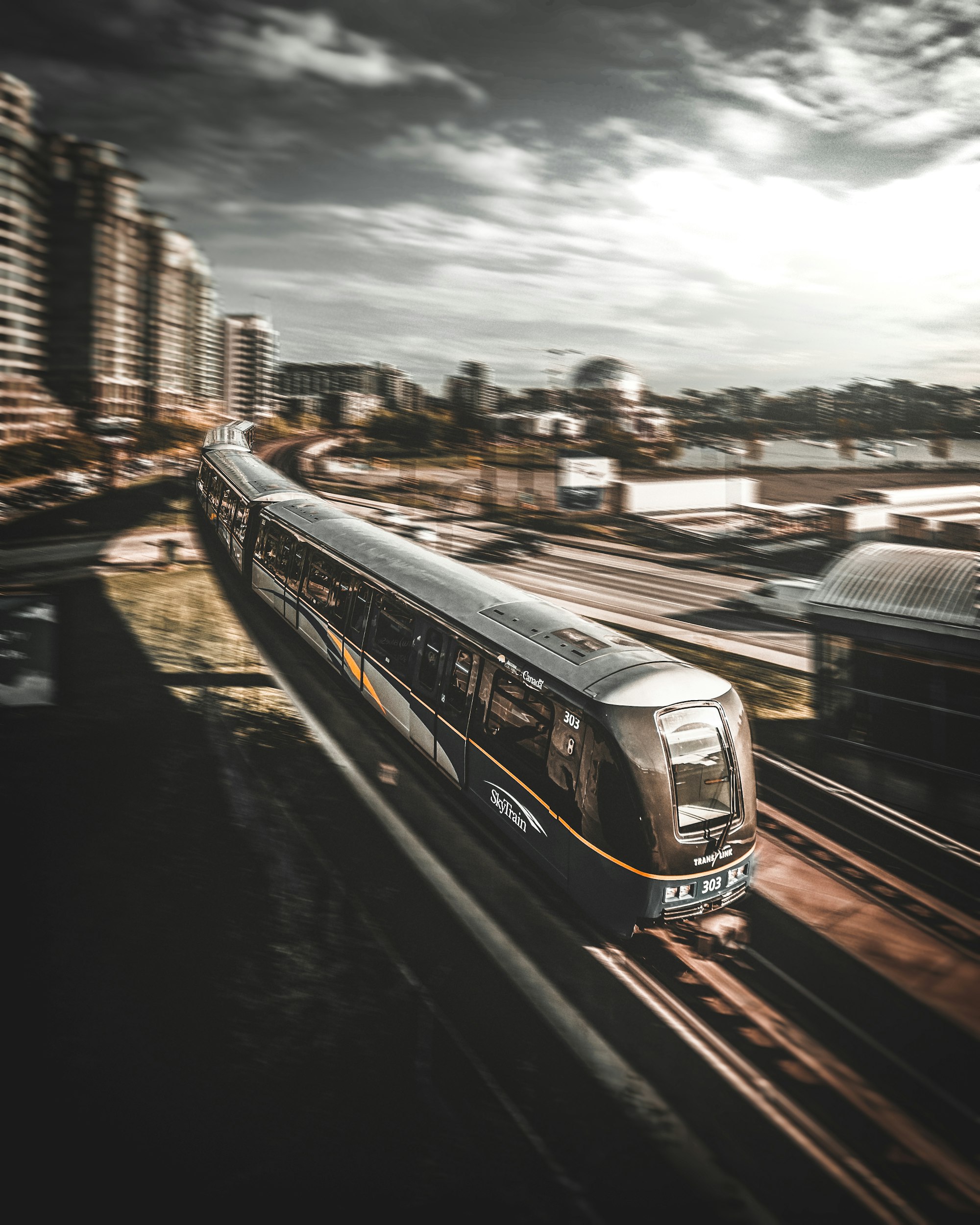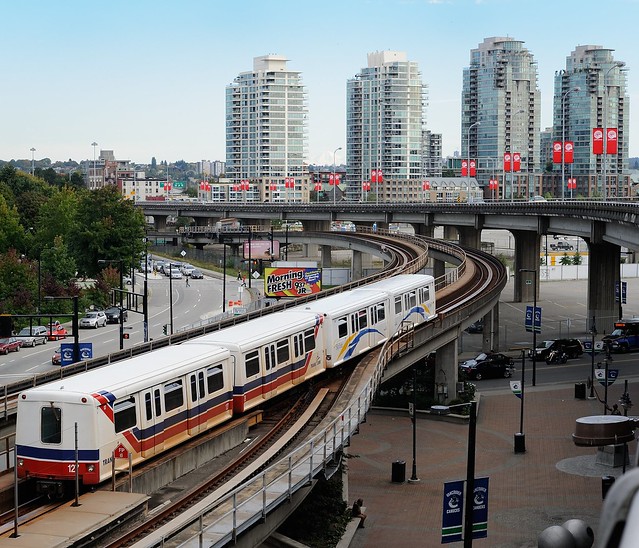Rapid Regional Transit: What Could Have Been
Do the Vancouver SkyTrain and Detroit People Mover provide a model for the future of rapid regional transit in metro Detroit?

Vancouver SkyTrain shows potential of Detroit People Mover
The 2.9-mile Detroit People Mover automated downtown circulator began operations in 1987. The People Mover's driverless, elevated fixed-guideway trains run in a one-way loop connecting 13 stations in the city's Central Business District.
In 1973, the Southeast Michigan Transportation Authority (SEMTA), the precursor to SMART, presented a plan for the downtown people mover as a complement to a proposed subway that never came to fruition. According to the Detroit Free Press, then-City Council Member and later U.S. Senator Carl Levin believed the People Mover could be "expanded into a fast-transit system at far less cost and and possibly with better service" than a subway.
Since launch, a common complaint with the People Mover is its short, 2.9 mile circular run and the fact that it moves in only one direction, limiting its utility.
Despite its limitations, the People Mover has a lot going for it. Trains run in their own elevated right-of-way and do not interact with vehicular traffic on the street. People Mover cars are capable of max speeds up to 56 mph, comparable to those of the Chicago L and New York City Subway. However, on the curvilinear route, real-life speeds top out at 30 mph on straightaways. Nevertheless, headways between trains are a mere 3-4 minutes. For a metro area unacquainted with rapid transit, the People Mover offers a glimpse at what rapid regional transit could look like.
According to transit consultant Jarrett Walker, labor costs account for 70 percent or more of the average annual operating cost of public transit systems in developed nations. Automated driverless systems like the Detroit People Mover are the notable exception. Automation allows for much lower operating costs, allowing for potentially lower fares and/or higher farebox recovery than many other forms of public transportation.
To see how an expanded People Mover could scale up to a viable regional rapid transit system connecting city and suburbs, check out the Vancouver SkyTrain. The SkyTrain uses identical technology as the People Mover, but is a far more expansive and comprehensive regional system, boasting 53 stops along nearly 50 miles of track. SkyTrain serves numerous destinations and neighborhoods within the city, including Vancouver International Airport, as well as surrounding municipalities. It is one of the longest fully-automated driverless transit systems in the world.

Vancouver SkyTrain. Look familiar? Photo CC 2.0 Tim Adams
SkyTrain opened in 1985 with a 13-mile route. The system has been subsequently expanded several times to combat congestion on Vancouver streets. The city opted for transit investments in lieu of urban freeway construction. The earliest SkyTrain expansion came in 1988 with a doubling the original line, from 13 to 26 miles. Additional expansions brought the SkyTrain system to its current size.
Today, SkyTrain ridership is quite robust. September 2017 saw 36 million boardings. Further expansions are planned to meet growing demand.
In the mid-2000s, transit consultant and former People Mover executive Marsden Berger proposed a Woodward Avenue People Mover expansion connecting Henry Ford Hospital to the existing downtown loop. Berger calls the People Mover technology, even 30 years on, "still the number one steel-wheel automated technology that you can buy… It has the capability of basically 100 percent expansion at very low cost, and we don't even have people who truly look at this."
Vancouver is a case study in what rapid, reliable, regional transit in southeast Michigan could look like, if only we in southeast Michigan could objectively study the Detroit People Mover for what it is, and what it could be.
References:
Bailey, I. (1988, June 25). Big changes for Vancouver. Nanaimo Daily News. p. A5.
Berger, M. (2011, September 27). Interview. Retrieved from: https://vimeo.com/29666187
Lenhausen, D. (1973, May 1). Plans for People Mover are presented to council. Detroit Free Press, p. A3.
Walker, J. (2011, July 5). Basics: Operating Cost. Human Transit. Retrieved from: http://humantransit.org/2011/07/02box.html
VIA Staff. (2017, December 17). Five things you didn't know about Vancouver's SkyTrain. Vancouver is Awesome. Retrieved from: https://www.vancouverisawesome.com/2017/12/12/skytrain-history-vancouver-1986/

